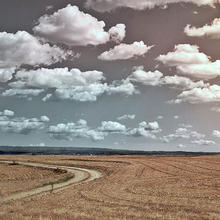NCEI's Central Region Climate Services provide data, tools, and information to help organizations, decision makers, and the general public address and mitigate the effects of climate variability and change. During the last five years, devastating floods, record heat, and drought have enveloped immense areas of the 14 states in the region.
NOAA and its key partners are responding to these events and the ever-increasing demand for climate information by reaching out and working directly with federal, state, tribal, academic, and nongovernmental organizations and private concerns.
- Drought Impact Reporter
The National Drought Mitigation Center launched the Drought Impact Reporter in July 2005 as the nation’s first comprehensive database of drought impacts. The Drought Impact Reporter collects and displays drought impact information for the United State, providing researchers and the public with more context and detail on drought as well as more readily summarized information.
- U.S. Global Change Research Program National Climate Assessment
The National Climate Assessment and Development Advisory Committee have engaged more than 240 authors in the creation of the National Climate Assessment Report and other technical reports.
- U.S. Global Change Research Program National Climate Assessment
The National Climate Assessment and Development Advisory Committee have engaged more than 240 authors in the creation of the National Climate Assessment Report and other technical reports.
Decision Support Tools
- Monthly North Central U.S. Climate and Drought Webinar
The monthly webinar focused from the Rockies to the Great Lakes and Ohio River Basin, includes an assessment of antecedent conditions, the current situation and a look forward a month to a few seasons. These presentations are a partnership between NOAA Regional Climate Services, American Association of State Climatologists, USDA’s Ag Hubs, National Integrated Drought Information System, National Drought Mitigation Center and Regional Climate Centers. They are held on the 3rd Thursday of each month. Past presentations: Recent | All Presentations. - Quarterly Climate Impacts and Outlooks
NOAA’s Quarterly Climate Impacts and Outlooks draw on sources across NOAA to provide concise and accessible climate information for various regions of the United States, including the Central Region and the Great Lakes. These syntheses discuss the major climate events during the past three months and contain historical seasonal assessments as well as climate predictions and projections.
- National Weather Service Central Region
- NOAA’s Regional Collaboration Team - Central Region
- NOAA’s Regional Collaboration Team - Great Lakes Region
- Cooperative Institute for Research in the Atmosphere
- Cooperative Institute for Research in Environmental Sciences
- Cooperative Institute for Great Lakes Research (CIGLER)
- National Integrated Drought Information System (NIDIS)
- Sea Grant
- American Association of State Climatologists
- Western Water Assessment
- Great Lakes Integrated Science and Assessments (GLISA)
- Midwest Regional Climate Center
- High Plains Regional Climate Center
- Department of the Interior Climate Science Centers
- Landscape Conservation Cooperatives

